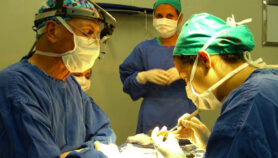By: Luisa Massarani
Send to a friend
The details you provide on this page will not be used to send unsolicited email, and will not be sold to a 3rd party. See privacy policy.
The Peruvian National Council of Science and Technology (CONCYTEC) has set up a network to help the country’s journalists and scientists communicate information about science and technology.
The network — which is made up of 200 journalists, scientists and public information officers — aims to boost science communication by improving relationships between those working in universities, research institutes, companies and the mass media.
A key objective is to support the training of science journalists, both through using the Internet and by bringing people together for workshops and other events. It also aims to make science journalism a part of undergraduate courses in communication studies.
According to Teresa Salinas, who is coordinating the initiative, science journalism in Peru has so far been driven by individual and isolated efforts. “There are no modules on science journalism in the communication courses [at university], and no extracurricular courses or workshops on the issue”, she says. “CONCYTEC has taken on a commitment to correct this situation, which is unfavourable for the country.”
Salinas sees the network as a creating a way for anyone interested in science communication to exchange knowledge, experiences and concerns. “This is very important in Peru since it will allow the integration of sectors that almost totally ignore one other,” she says.
The creation of the network follows an agreement signed by Peruvian President Alejandro Toledo Manrique and political party leaders, social organisations and religious institutions in July to use the mass media to promote creativity, the experimental method, and logical reasoning in the whole population — particularly the young.
Link to the declaration of the Peruvian Science Journalism Network (in Spanish)













